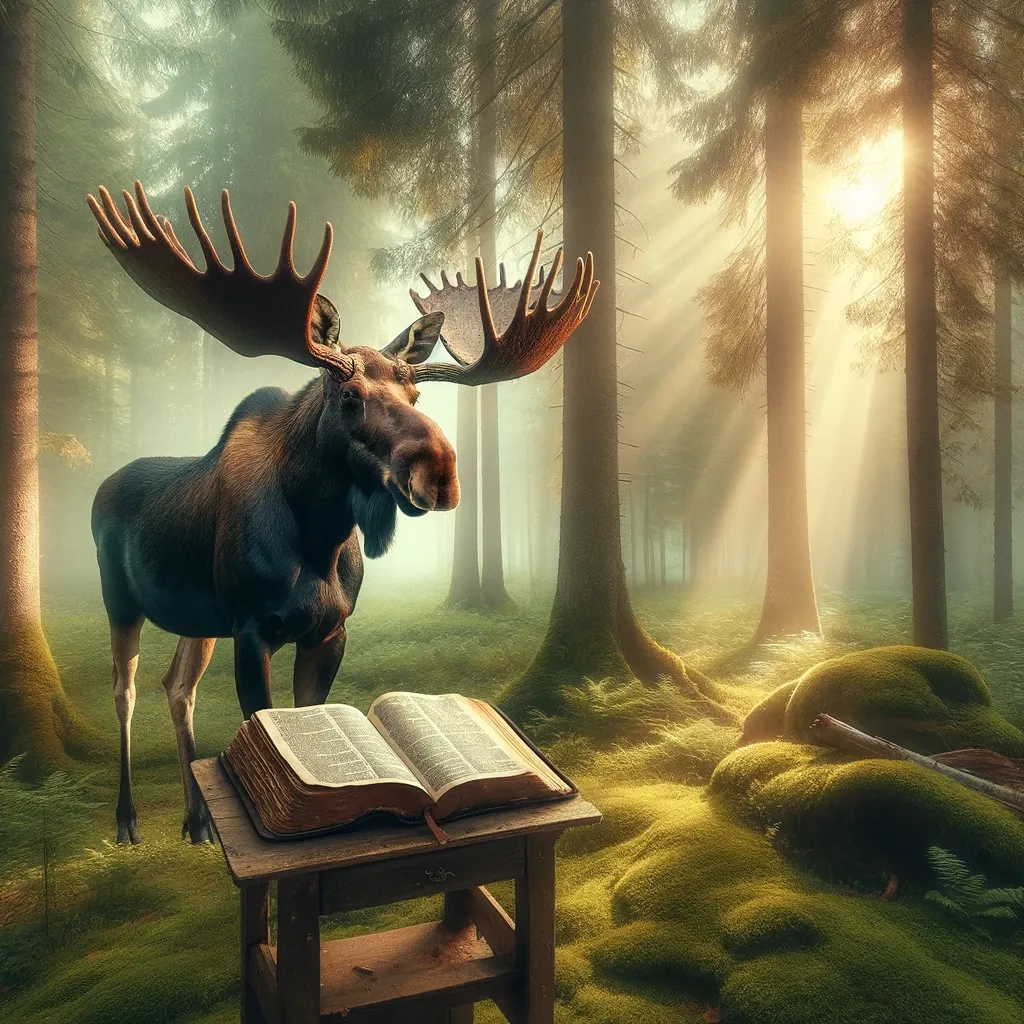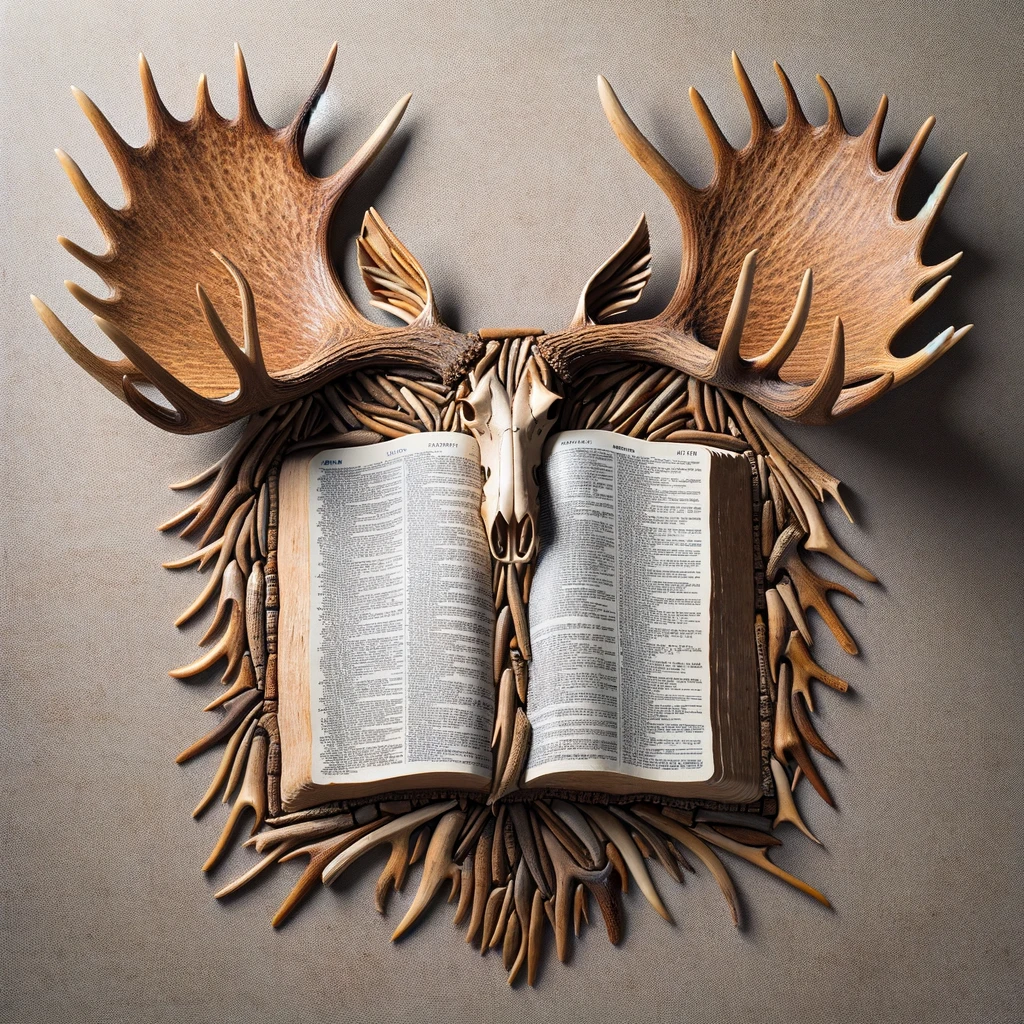What does a moose symbolize in the bible?

"what does a moose symbolize in the bible?", The moose, a majestic creature often associated with the vast wilderness of the Northern Hemisphere, holds a special place in various cultural mythologies and symbolisms. When we turn to the Bible, a text rich in metaphorical and symbolic language, the question arises: does the moose find a place in this ancient narrative, and if so, what does it symbolize?
Interestingly, the moose is not directly mentioned in the Bible. This absence is likely due to the geographical and historical context in which the Bible was written. The texts of the Bible, predominantly set in the Middle East, were composed in a region where moose were not native and thus unfamiliar to the authors. However, this does not preclude us from exploring the potential symbolic significance of the moose in a biblical sense, particularly when we consider the broader themes and motifs present in the scriptures.
Symbolism of Animals in the Bible
To understand the potential symbolic meaning of a moose in a biblical context, it is helpful to first consider how the Bible treats animal symbolism in general. Animals in the Bible often embody characteristics or spiritual truths. For instance, the lion represents strength and majesty, often associated with Judah or God Himself, as seen in Revelation 5:5. The lamb is a symbol of sacrifice and purity, central to the Christian understanding of Jesus Christ as the "Lamb of God."
Drawing from this established tradition of animal symbolism, we can extrapolate potential meanings for the moose.
The Moose: Symbolizing Majesty and Strength
The moose, as one of the largest and most imposing creatures in its natural habitat, can be seen as a symbol of strength and majesty. In biblical terms, these qualities are often attributes of God's character or His creation's grandeur. For example, Psalm 104:24 says, "How many are your works, Lord! In wisdom you made them all; the earth is full of your creatures." The moose, in its towering presence, could be seen as a testament to this divine artistry and power.
Solitude and Guidance
Another notable characteristic of the moose is its solitary nature. This can be likened to spiritual solitude, a theme that recurs throughout the Bible. Jesus himself sought solitude for prayer and reflection, as depicted in Luke 5:16: "But Jesus often withdrew to lonely places and prayed." The moose, in its solitary wanderings, might symbolize the importance of seeking spiritual solitude for personal growth and communion with God.
Furthermore, the moose, known for its ability to navigate through challenging terrain, could symbolize guidance and perseverance. In biblical language, this mirrors the idea of God guiding His people through life's trials, as seen in Psalms 23:3, "He guides me along the right paths for his name’s sake."
The Moose and Environmental Stewardship
In the Bible, there is an emphasis on the stewardship of the earth and its creatures, as stated in Genesis 1:28, where humanity is given dominion over the animals and is charged to care for them. The moose, as a creature that often faces threats due to environmental changes, can symbolize the Christian responsibility towards environmental stewardship and the protection of God’s creation.
The Moose in Christian Art and Literature
While not directly mentioned in the Bible, the moose has found its way into Christian art and literature, often embodying the qualities discussed above. In some Christian artistic traditions, especially those from regions where the moose is native, this animal is depicted in a manner that echoes the biblical reverence for God's creation.

Conclusion
In conclusion, while the moose is not a creature mentioned in the Bible, its symbolic significance can still be explored within a biblical context. Its majesty and strength, solitary nature, ability to navigate challenging landscapes, and its role in environmental stewardship, all resonate with major themes found in the biblical narrative. The moose, in its silent grandeur, invites us to reflect on the many facets of spiritual truth, reminding us of the depth and breadth of symbolism that can be found when we look at the natural world through the lens of faith.
In the end, the moose stands as a powerful symbol, not just in its physical presence, but in the spiritual and moral lessons it imparts. It reminds us of the diversity of God's creation and the myriad ways in which all creatures, great and small, can lead us to a deeper understanding of the divine.
You can also take a look at our animal emoji collection.




